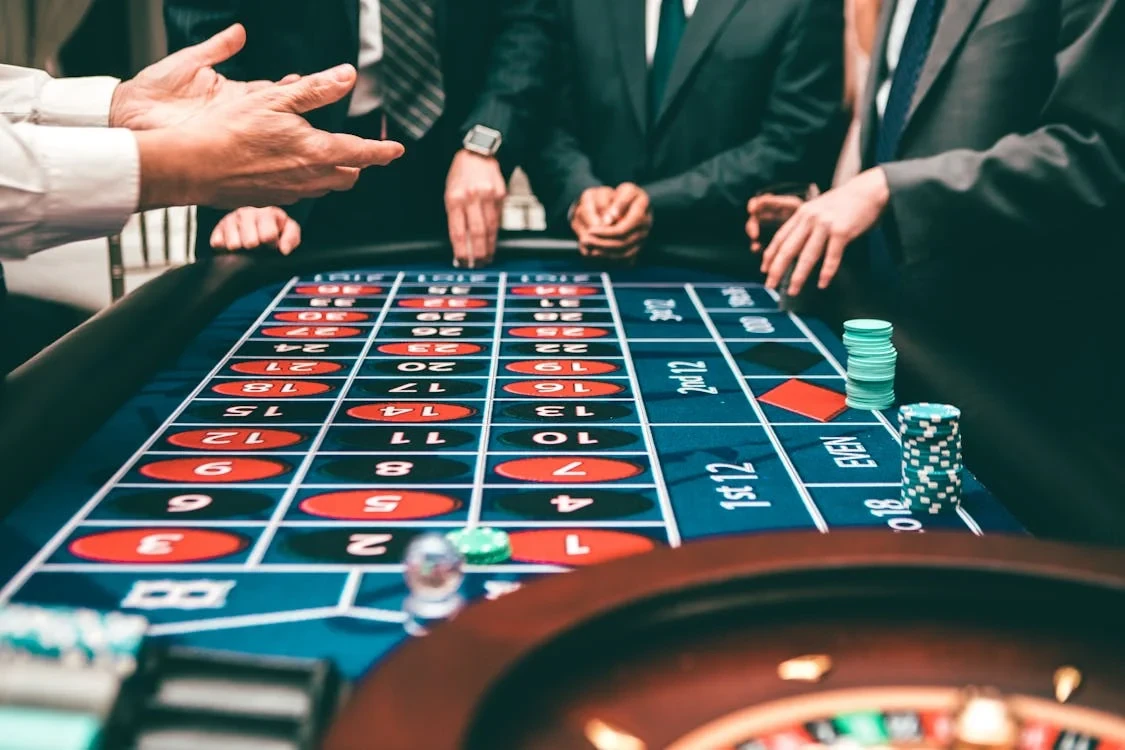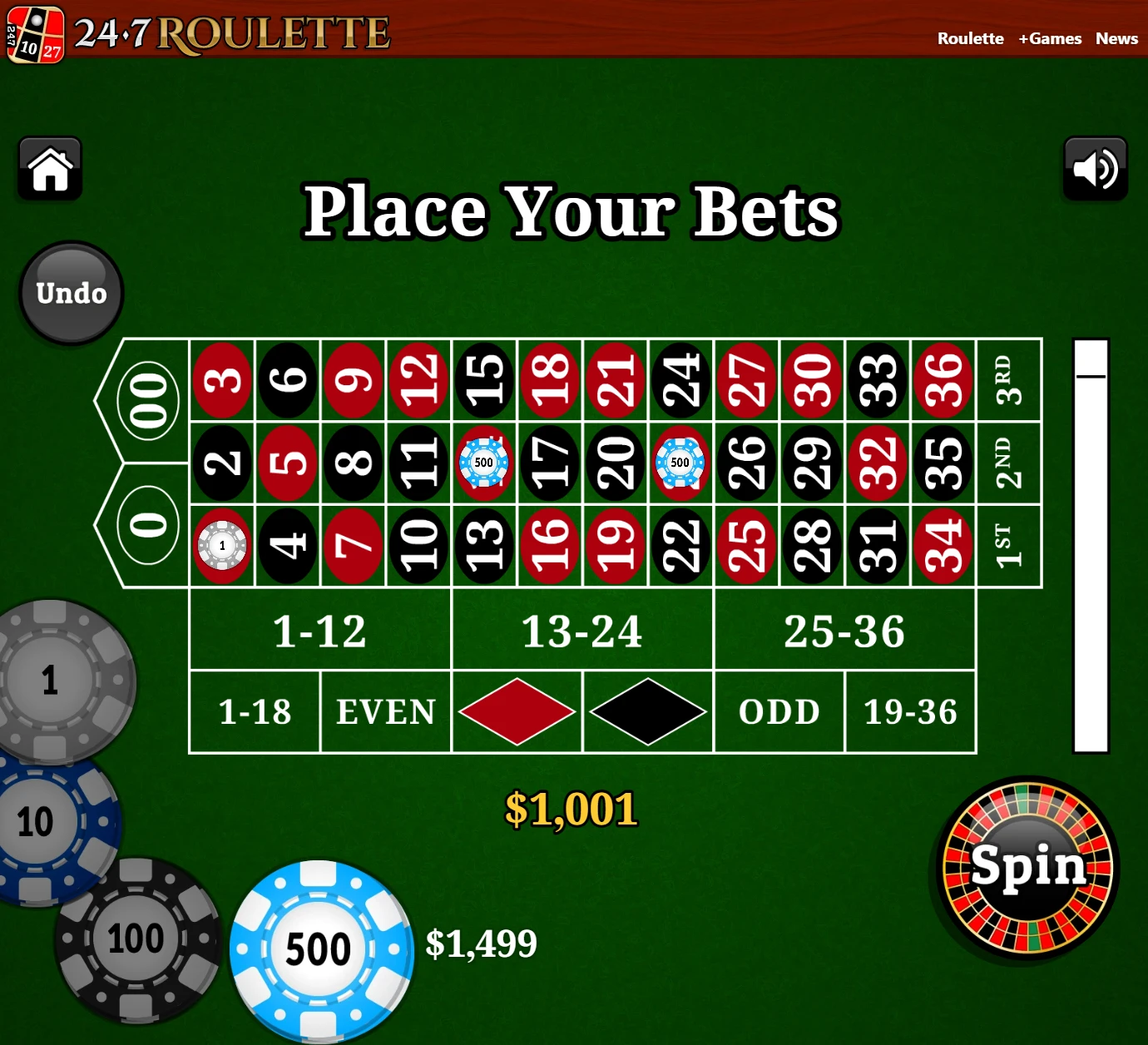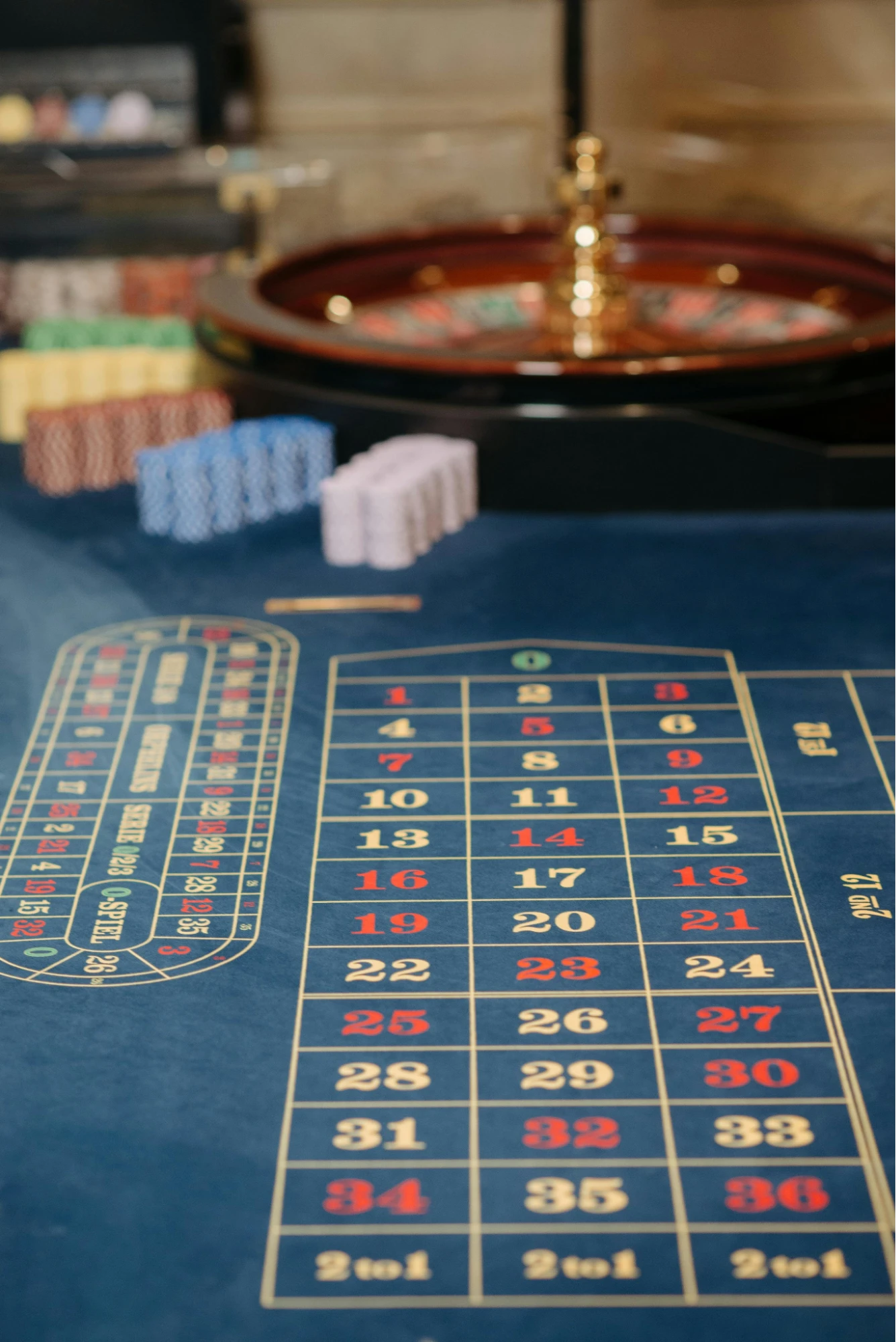The Top Roulette Bets Every Gamer Should Know

Roulette is one of the most iconic casino games of all time. As a game of pure chance, it’s addictive because you don’t know what will happen next.
However, despite this, betting strategies exist that could help you overcome the odds stacked against you. These aim to increase the likelihood of winning while reducing the risk of ruin (losing everything).
Chances of Winning Roulette
The chances of winning in roulette depend on the bets you place. Strategies with lower odds offer higher payouts, and vice versa. Here’s a table explaining how it works:
Roulette payouts chart
|
Roulette bet |
Roulette payout |
American odds |
European odds |
|---|---|---|---|
|
One Number (Straight Bet) |
35:1 |
2.63% |
2.70% |
|
Two Numbers |
17:1 |
5.26% |
5.40% |
|
Three Numbers |
11:1 |
7.89% |
8.10% |
|
Four Numbers |
8:1 |
10.52% |
10.81% |
|
Five Numbers |
6:1 |
13.15% |
13.51% |
|
Six Numbers |
5:1 |
15.79% |
16.21% |
|
12 Numbers (Column/Dozen) |
2:1 |
31.58% |
32.43% |
|
18 Numbers (Red/Black/Odd/Even/High/Low) |
1:1 |
47.37% |
48.65% |
Players can place any of the roulette bets outlined in the table. An 18-number bet means you bet on half of the 36 numbers available (excepting the zeros), winning if the ball lands on any of them in the roulette wheel. The chances of winning these wagers under American odds is 47.37%, which is slightly lower than under European rules of 48.65% (because of the presence of a double zero on many U.S. tables). However, such a bet returns 1:1, meaning you get back double what you paid in.
If you want to triple your money, you can go for 12 numbers (represented as a column on the roulette table). The odds of winning here are slightly below the 33% you’d need to break even across repeated rounds. This pattern continues as you lower the number count until eventually, you reach a payout of 35:1 with an odds of 2.63% (American) or 2.7% (European). Again, this sits below the 2.86% you’d need to break even.
Best Roulette Bets

Because roulette betting odds skew in favor of the house, players have attempted to develop betting strategies to increase the likelihood of winning. These approaches are sometimes successful, but not always.
The problem is that roulette is supposed to be a game of pure chance. Under ideal conditions, roulette wheels land on each number at an identical frequency over many rounds, making it harder to develop betting strategies that beat the odds.
Roulette breaks bets into two groups: inside bets and outside bets. Experienced players use inside bets for fun (and the chance to win larger prizes) and outside bets for most betting strategies (but not always).
Inside bets
Roulette table rules allow various betting combinations, based on how numbers appear in the grid.
A straight bet occurs when players put chips in the center of a number square on the table. Players can place as many chips as they want (up to any limit set by the casino).
Split bets are those placed on adjacent squares (represented by the line between them). These bets let you bet on two numbers along a common edge.
Street bets are where players bet on three numbers in a row, denoted by placing two chips on the bookend lines.
Corner bets are where players bet on four numbers by placing chips at the intersection of the four lines.
Finally, a double street is where players bet on six numbers on two adjacent horizontal lines of three numbers with chips bookmarking the end lines.
Outside bets
Outside bets are bets players place outside the roulette table’s number chart. These involve betting on more numbers, increasing winning odds significantly.
Even or odd bets are where you bet on the resulting number being even or odd. Since almost half the numbers fit into either of these categories, the winning odds are nearly 50% (as explained in the table), and the return is 1:1, meaning you get your original wager back, plus the value of the wager (i.e. $20 from a $10 bet).
Red or black is the same. It offers a nearly 50% chance of winning and an opportunity to double your money since almost half the numbers are red or black.
Low or high has a similar 50-50 setup. Players either bet on the ball landing on numbers 1-18 or 19-36. Again, the payout is 1:1.
Dozen bets are more interesting. Here, you bet on the first third 1-12, the middle third, 13-24, or the upper third, 25-36. The winning probability is lower but the payout is 1:2, meaning you can triple your money if you land one of these. You can also do something similar by placing a column bet, where you indicate to the dealer you want to bet on a column of numbers on the roulette table.
Smartest Bet in Roulette
Outside bets are smart because they offer a higher chance of winning. Consistent earnings are more likely if you can find an edge that overcomes the house advantage. Any skill or strategy you use only needs to improve your winning odds by around 3% to build your bankroll.
The following are some smart bets you can place in roulette, based on mathematical principles:
Labouchère Roulette Strategy
French mathematician Henry Du Pré Labouchère developed a roulette strategy that could beat the house provided players had an infinite bankroll. While the underlying assumption is unrealistic, it remains a popular technique used by many people wanting to win big in Las Vegas and other casinos across the U.S.
Players start by deciding how much money they want to win, say $100. The number should be realistic and avoid stretching the bankroll, according to Labouchère. Then, they split the number into smaller random numbers which, when added, sum to equal the original total. For example, a player could choose the set [5,30,40,20,5], since adding these equals 100.
According to Labouchère, players should then bet the dollar amount given by the sum of the numbers at the ends of the set: $5+$5=$10 in this case. Then, players should choose a bet with a 1:1 payout (red/black, odd/even, or high/low).
If the player wins, they cross off the numbers on the furthest left and right of the set, in this case, the 5 and 5. Then, they add their winnings to the end of the set to get [30,40,20,10]. The next bet is then the sum of the two new numbers at either end of the sequence – 30 and 20, equalling $50.
By contrast, if the player loses, they don’t cross off any numbers and simply add their would-be winnings to the end of the sequence to yield [5,30,40,20,5,10]. Then, they repeat the strategy of adding the end numbers and placing the bet.
Mathematically Labouchère’s technique is similar to Martingale’s because it encourages players to increase betting amounts over time. However, the algorithm is significantly more sophisticated because it reduces downside losses while helping players increase the odds of reaching their target winnings.
Research shows that Labouchère’s system lowers the winning percentage players require to 33.34%, down from the raw 47.37% on U.S. roulette tables to achieve their desired prize money. Therefore, the conclusion is that the list completes at a lower percentage of wins than raw plays, yielding a real advantage.
Unfortunately, that winning percentage only applies in the mathematical limit after an extremely high number of plays. For shorter games, the percentage of rounds players must win often exceeds 47.37%, which is higher than their expected winning odds using straight bets.
Labouchère’s system can work for small bets placed over dozens or hundreds of rounds. However, it requires careful management. Players must ensure they don’t exceed the table limit (the maximum bet the casino allows) and retain their bankroll. Running out of money brings the sequence to an end and guarantees ruin.
Andrucci System
The Andrucci System is another approach some players use. It involves placing random bets for the first 30 to 37 rounds and watching for “hot balls” landing on the same numbers.
As far as historians know, Andrucci wasn’t the name of the person who developed this system. Instead, it could be attributable to numerous players throughout history. Unlike Labouchère’s system, it isn’t algorithmic but relies on a statistical property called the law of large numbers.
The frequency distribution of numbers on a fair roulette wheel should be perfectly uniform. After an arbitrary number of rounds, the frequency of specific rolls should converge on the same number. For example, after 37 million rounds of European roulette, each number should appear close to 1 million times (with percentage deviations from expectations decreasing as the round total increases). However, if the wheel is unfair or damaged, some numbers may arise more often than others.
Statistics-savvy players can use the law of large numbers and statistical inference techniques to determine whether a number is appearing more often than it should. For example, the random probability of the number 5 appearing 6 times over 40 spins is 1 in 1,697, which is an unlikely event. However, if this event occurred, statistical tests would show it as an outlier and far out of line with the expected distribution. Players could then set threshold probabilities (say 1 in 200) to determine whether to place bets on specific numbers (or pick specific p-values from statistical likelihood tests, like p<0.05). Then, gamers could use these probabilities to determine the size of the bets they should place, placing smaller bets on numbers appearing slightly more than they should, and larger bets on those appearing much more often than they should.
Unfortunately, using the Andrucci system requires knowledge of statistics. Players need a background in probability theory to understand it.
The method also requires pre-testing. You need multiple trials to detect bias using the method (around 30 to 37, according to some sources) or you watch someone else playing.
Furthermore, most casinos test their roulette tables regularly to ensure fairness. Statisticians look for emergent patterns and recalibrate hardware to avoid them. If they find a problem, the roulette wheel will go for a service.
Combining Labouchère With Andrucci

The most sophisticated strategies combine the algorithmic superiority of Labouchère’s system with the statistical game feedback from Andrucci-style data gathering.
For example, a player wanting to win might:
- Use the Labouchère’s for the first few rounds while collecting data
- Modify betting patterns according to emergent statistical patterns
- Change betting amounts through successive rounds, increasing the amount wagered for higher probability wins
For example, players might observe a higher probability of winning in one of the columns than the other two. Then, they would continue using Labouchère’s algorithm but switch from 1:1 to 1:2 bets to increase their prize money when statistical likelihood tests told them to do so. Adopting this shift would shorten the time to target winnings while reducing the risk of ruin.
Historically, Andrucci’s method applied to “hot balls.” However, you can also use it for sequences or number clusterings that look out of the ordinary. While casinos try to ensure perfect randomness, they don’t always succeed and some patterns can slip through the net.
Sequence Plays
Sequenced straight bets are another technique to beat the roulette wheel. Here, you place straight bets on a row of numbers that appear in the same physical order. For example, you might bet on 8, 12, 29, 25, and 10.
Sequence bets can be useful when:
- Using the Andrucci method
- Estimating the ball’s ballistics
For example, you might notice the ball landing in the same region of the roulette wheel even if it doesn’t always find the same number. More balls than expected may slot into 8, 12, 29, 25, or 10 than sheer randomness would predict. If that happens, betting on a sequence of numbers in the area could increase expected winnings into positive territory.
The other strategy is to place bets in sequence based on the ball’s ballistics and the roulette wheel’s spin. While you can’t always predict the exact landing area, you may be able to estimate the region where it will fall.
Most players place straight bets quickly while the ball is in motion on numbers in the target region, based on their observations. However, more sophisticated gamblers will often place higher bets in the middle of the target area and lower ones on the outer reaches to reflect the statistical distribution of landing points.
Casinos frown on this technique but they can’t police it if you do it instinctively. Don’t software or external aids to measure ballistics dynamics as this can land you in trouble.
Other Roulette Bets
You will sometimes see websites advertising other roulette betting methods. However, these have serious pitfalls and won’t always yield reliable winnings, even if they are fun to use.
For example, the Martingale, Fibonacci, and Paroli methods all fall victim to the fact that the house skews raw winning probabilities in its favor. While these progressive betting strategies are interesting, they still require the player to have better luck than expected.
Safe betting methods, like 1:1 bets, are also an option. However, these are only useful for players who want fun and don’t mind a higher chance of losing than winning. Over time, these strategies will empty your bankroll, even if you win short-term.
Tips For Roulette
This article delved into the finer points of roulette and introduced some advanced mathematical concepts. However, sticking to basic roulette tips can still help if you are a beginner. Here’s what to do:
Avoid American Roulette Tables
If you have a choice between American and European roulette tables, choose the latter. Unlike American roulette, the European version only has one zero slot, increasing the odds of winning every bet type.
Use Outside Bets
Also, use outside bets. Putting money on high/low, odd/even or red/black gives you a 47.37% chance of winning on American tables.
Play For Fun
You also want to play for fun on most roulette tables. While sophisticated techniques are sometimes available, they don’t always work.
Go into a game of roulette expecting to lose your wager. If you win, see it as a bonus and take your winnings with you.
Walk Away After A Winning Streak
The odds of winning five roulette rounds in a row are exceptionally low. For example, hitting a single number five times in five spins is one in 70 million. But even hitting red five times in a row is only 1 in 37, so quitting while you are ahead might be a good idea!
So, has this discussion inspired you to start playing roulette?
Seasonal Roulette Games
More Games
Roulette News
Disclaimer
DISCLAIMER: The games on this website are using PLAY (fake) money. No payouts will be awarded, there are no "winnings", as all games represented by 247 Games LLC are free to play. Play strictly for fun.

































